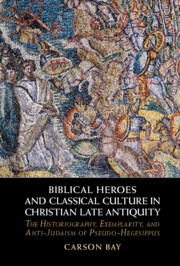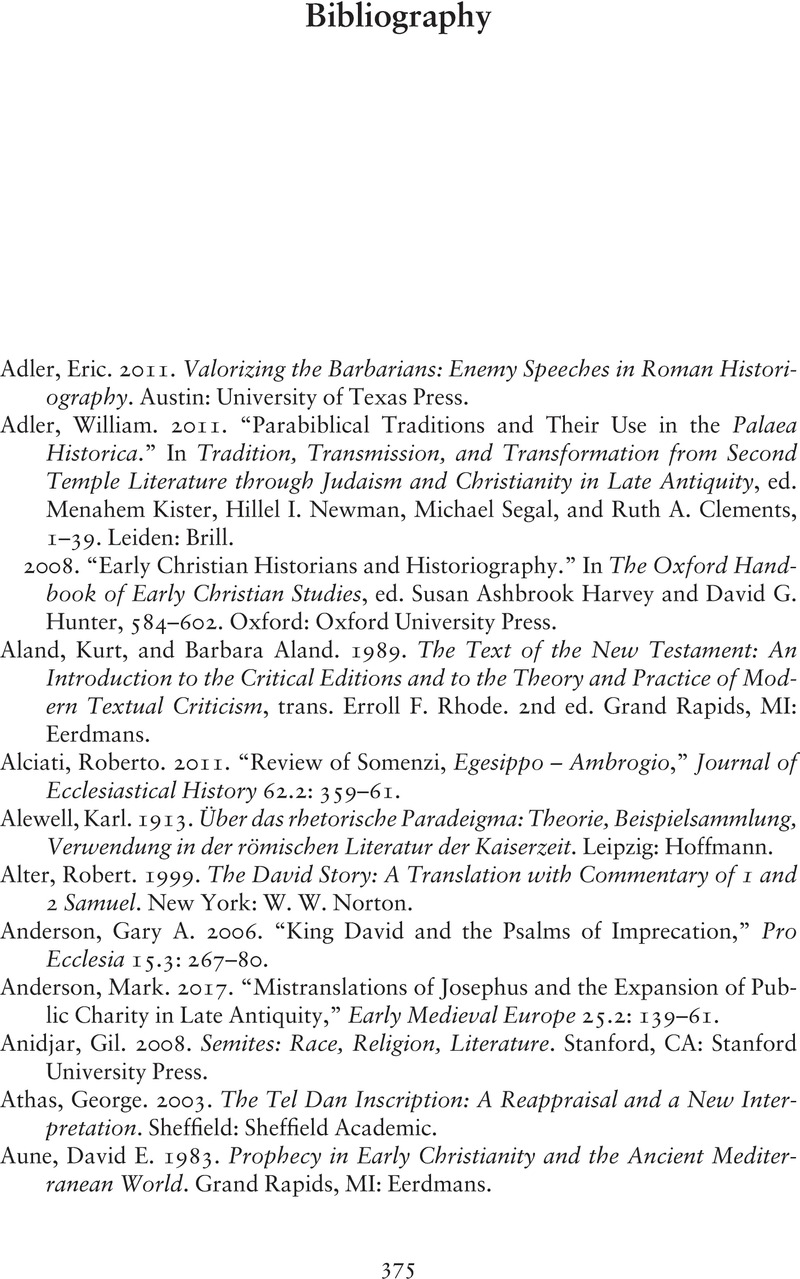 Biblical Heroes and Classical Culture in Christian Late Antiquity
Biblical Heroes and Classical Culture in Christian Late Antiquity Book contents
- Biblical Heroes and Classical Culture in Christian Late Antiquity
- Biblical Heroes and Classical Culture in Christian Late Antiquity
- Copyright page
- Dedication
- Contents
- Acknowledgments
- Abbreviations
- Introduction
- 1 On the Destruction of Jerusalem
- 2 Hebrew versus Jew
- 3 Abraham, Ethnography, Exemplarity, and Oratory at De Excidio 5.41.2 and 5.53.1
- 4 Exemplarity and National Decline at De Excidio 5.2.1
- 5 Jewish and Christian Martyrdom at De Excidio 3.2 and 5.22
- 6 King David as Christian-Classical Exemplum in Pseudo-Hegesippus
- 7 Elisha, Disaster, and Extended Exemplarity in De Excidio
- 8 A Classical World of Biblical Exempla
- 9 A Christian World of Hebrew Exempla
- Conclusion
- Appendix 1: Old Testament Exempla in De Excidio, A–Z
- Appendix 2: Pseudo-Hegesippus’ Sources
- Bibliography
- Source Index
- General Index
- References
Bibliography
Published online by Cambridge University Press: 10 November 2022
- Biblical Heroes and Classical Culture in Christian Late Antiquity
- Biblical Heroes and Classical Culture in Christian Late Antiquity
- Copyright page
- Dedication
- Contents
- Acknowledgments
- Abbreviations
- Introduction
- 1 On the Destruction of Jerusalem
- 2 Hebrew versus Jew
- 3 Abraham, Ethnography, Exemplarity, and Oratory at De Excidio 5.41.2 and 5.53.1
- 4 Exemplarity and National Decline at De Excidio 5.2.1
- 5 Jewish and Christian Martyrdom at De Excidio 3.2 and 5.22
- 6 King David as Christian-Classical Exemplum in Pseudo-Hegesippus
- 7 Elisha, Disaster, and Extended Exemplarity in De Excidio
- 8 A Classical World of Biblical Exempla
- 9 A Christian World of Hebrew Exempla
- Conclusion
- Appendix 1: Old Testament Exempla in De Excidio, A–Z
- Appendix 2: Pseudo-Hegesippus’ Sources
- Bibliography
- Source Index
- General Index
- References
Summary

- Type
- Chapter
- Information
- Biblical Heroes and Classical Culture in Christian Late AntiquityThe Historiography, Exemplarity, and Anti-Judaism of Pseudo-Hegesippus, pp. 375 - 401Publisher: Cambridge University PressPrint publication year: 2022


